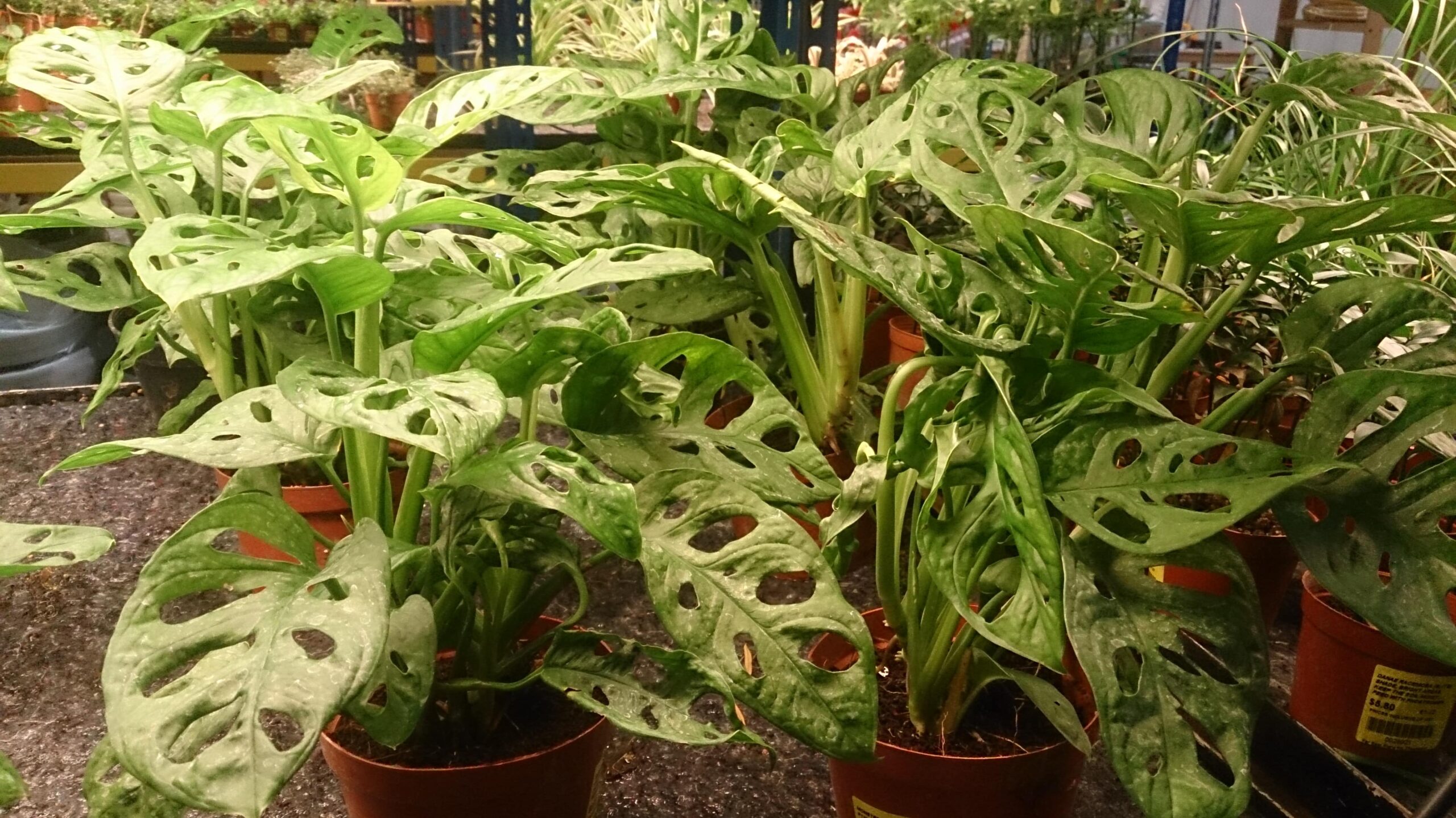If you’re a hard-core plant lover like me, you’ve probably done these two things:
- You’ve considered opening a new credit card to buy the newly-released moss wall on The Sill, and
- You’ve been absolutely spell-bound, nay, haunted, by the stunning monstera deliciosa variegata, also known as the variegated monstera.
The first time I saw it on Instagram, I lost sleep over it.
How is she so beautiful?
Why aren’t there more of her?
Who do I have to kill to get this plant?!
In this blog post, I’m answering all the questions.
And buckle up, buttercup, because we’re gonna do SCIENCE and also ECONOMICS.
What is Variegation?
Of course, we all learned about DNA in high school biology. All living things are made up of DNA, and they’ve wound up in little bundles called chromosomes. But sometimes, two different types of chromosomal makeup get mixed up, which causes a mutation.
Naturally, this can occur in all sorts of features. Still, when there’s a mutation in chlorophyll, the green pigmentation in plants, we call chimaera variegation, resulting in a mix of tissue with the chlorophyll and tissue without it, the latter resulting in shades of silver and pale yellow.
And we absolutely lose our minds over it.
Do you want another example of variegation? Look no further than the philodendron silver!
I’m a HUGE philodendron fanatic, and the philodendron silver is one of my favourites.
This dangling beauty has delicate variegation pockets that give shimmery freckles so exquisite that the first time I saw one in the arms of a nursery worker, it was all I could do not to grab him by his shirt screaming, “GIVE ME THAT PLANT” in his terrified face.
While a plant as elegant as the philodendron silver is actually relatively easy to find, the elusive variegated monstera is anything but.
Why Are They So Rare?
To put it simply, variegation affects plants differently.
While my beloved philodendron silver is theorized to benefit from the variegation by making the most of low light, variegation in monstera is just an accident for lack of a better explanation.
Botanists have yet to determine any use behind variegation in monstera—if anything, the lack of chlorophyll is, by all means, a practical burden on the plant since it means that they have to work harder to make food. And since there’s no use other than aesthetic, Little research has been conducted on how to increase variegated monstera.
So a shortage of plant cultivation, plus the cult following, equals an expensive friggin’ plant.
If you do get your little green thumbs on this coveted plant, there are a couple things to consider when taking care of it.
There are two significant types of variegation:
Marble variegation is pretty much what you probably imagine: an evenly distributed mixture of green and white leafage, and it’s splendid.
And then there’s the half-moon variegation.
And all I can say is that it is the Victorian courtesan that decent gentlemen ruin themselves and their good family names.
Its leaves are a glorious, devastatingly perfect split; one emerald green, the other a milky white.
That being said, the pricing of these two forms of variegations differ drastically.
On the internet, I’ve seen marbled monstera plants go for about £40.
Despite my plant obsession, I tend to be cheap with plants; I either buy them when they’re still young, or I’ll save the wilting ones on sale and (usually) nurture them into thriving green beauties.
So forty bucks is a bit steep for me, but honestly, I think that’s an excellent price for a bona fide rare plant.
Meanwhile, a half-moon monstera can cost a whopping £150.
On top of that, there’s a good chance you won’t find one in your local area, and so you’ll have to load out even more dough on shipping.
Nevertheless, both are stunning examples of foliage, and both are going to give you the thrill of the chase because, my god, these babies are hard to find.
You Get a Variegated Monstera! And YOU Get a Variegated Monstera!
While the genetic makeup of the monstera deliciosa variegata is certainly something tricky, there are few industries that I’ve seen in the past few years gain as much footing and power as the indoor plant market.
According to The Economist, google searches for plants (including but not limited to hanging plants, succulents and cacti) have increased five to ten-fold in the past eight years, due to their accessibility via online plant shops such as The Sill and Patch, their relatively painless care needs compared to children and pets, and the fact that they’re ideally suited for apartment living.
Due to a phenomenon that can quite literally be summed up in essays upon essays, millennials often find a more effortless, more affordable sense of domestic bliss in owning indoor plants.
While our parents aimed to have two kids and a dog, we’re reading Good Night, Moon to our philodendrons and fiddle leaf figs.
Combining this with the aesthetic appeal of Instagram and the convenience of E-Commerce, we have a growing market met by a ravenous demand.
And this time, we want that monstera, and we want her bad.
Variegated Monstera Care
For the most part, variegated monstera isn’t too different from their fully green counterparts, which is excellent news! Monstera deliciosa are tough plants that proliferate in good light and only need regular watering.
However, since the white pigment cannot absorb sunlight, you might need to help the green part of the leaves compensate by giving them extra light. Be warned that the half-moon variety will struggle more and is more prone to wilt and die!
While I doubt the longevity of the stunning-but fragile half-moon monstera, I foresee an increase in the hardier marbled monstera in the next two years.
Fantastic Beasts and Where to Find Them
For the time being, you’re going to have the best luck on the internet. While the variegated monstera hasn’t quite graced the major online plant shops, smaller vendors like those on Etsy can supply them, but for a pretty penny. It’s worth it, though, to be the envy of all your friends.
And when your friends aren’t around, you can take in those gorgeous leaves and just…cry.

